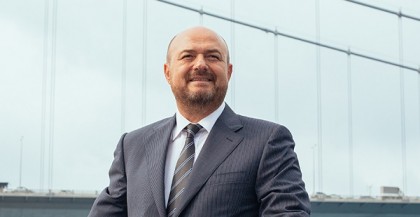A look into 2022 in the sense of port operation

Research and consultancy firms predict averagely 6% growth in the world container business volume in the forthcoming five years. This growth means the business volume of additional 240 MTeu following a five-year period, being extra 45 MTeU each year. The empty capacities and announced investment plans of the global ports will provide additional 125 MTeU capacity. Even with those investments, there will be sufficient reasons for the construction of new ports with the attainment of the capacity utilization ratio of about 80% in 2022, which is 68% as of the yearend 2017. Of course, these needs and new port investments will take place in the regions that will grow most rapidly. While the sizes of ships that continues to grow bigger and the increasing number of movements per ship cause the demand to emerge particularly at the deep-water ports, the demand for the ports designed according to the sizes of older ships will continue to decline.
Another reality that will support such development is the “One Belt One Road” strategy implemented by China. We can say that the Chinese firms backed by the Chinese Government that has undersigned significant port purchases in the last 10 years in the Indian Ocean, the Mediterranean, and Northern Europe starting from China, will continue to be active in the same demand in the next five years.
World port sector is still able to create averagely 35% Ebitda and 6% ROIC despite the low growth ratios in the last ten years, investment needs increasing incrementally, and the price pressures of the combined container lines. The sector is still attractive for meeting the demand and the investments to be made in the right places must be expected to yield revenues that are above the said performances.
When it comes to Turkey, our ports that ended 2017 with 10 MTeU’ business volume have a share (1,3%) from the markets of the world that is much lower than what it deserves. Our sector that has realized a growth of ,8 in the first six months of 2018 has still lots of road to travel.
I believe that there still are opportunities for the markets in the Eastern Mediterranean and the Black Sea to become transshipment ports. Even if Asyaport, Marport, and Kumport are our ports that create the transit business volume primarily in our country, they do not have the capacities that will fulfill the business volumes that will increase in the long term. 26% of the world container traffic are handled as transit at least once. As the country, we must make it a strategic target to establish a transshipment port in the Eastern Mediterranean and the Black Sea in Turkey.
Two neat realities for our country are the facts that five of the 10 biggest port operator firms of the world still operate ports in Turkey and the remaining five firms scrutinize the port opportunities to be able to access the market. In order for our current ports to remain as actors in the long term, it is necessary that the enterprises in the same geography must be ensured to be merged and specialized and that investments are made in docks, backgrounds, and equipment in the manner that they could provide services fast to the ships that will continue to become bigger and bigger. Near future will be dark for the investors who lack the culture of cooperation and partnership and who have the opinion of “let it be mine, regardless of whether it is small or not.” Here, our Ministries of Transportation and Customs have lots of major tasks to do: bringing the obstacles ahead of transit trade to the level of at least the competitor countries, focusing on the firms that will bring along the largest business volumes rather than those that will give the highest amount of funds in the new and large-scale privatizations, developing an incentive system for the merger of the ports that are medium size and situated in the same port region, and compelling those firms if necessary.
Time has come and it is necessary to play for high stakes…























































